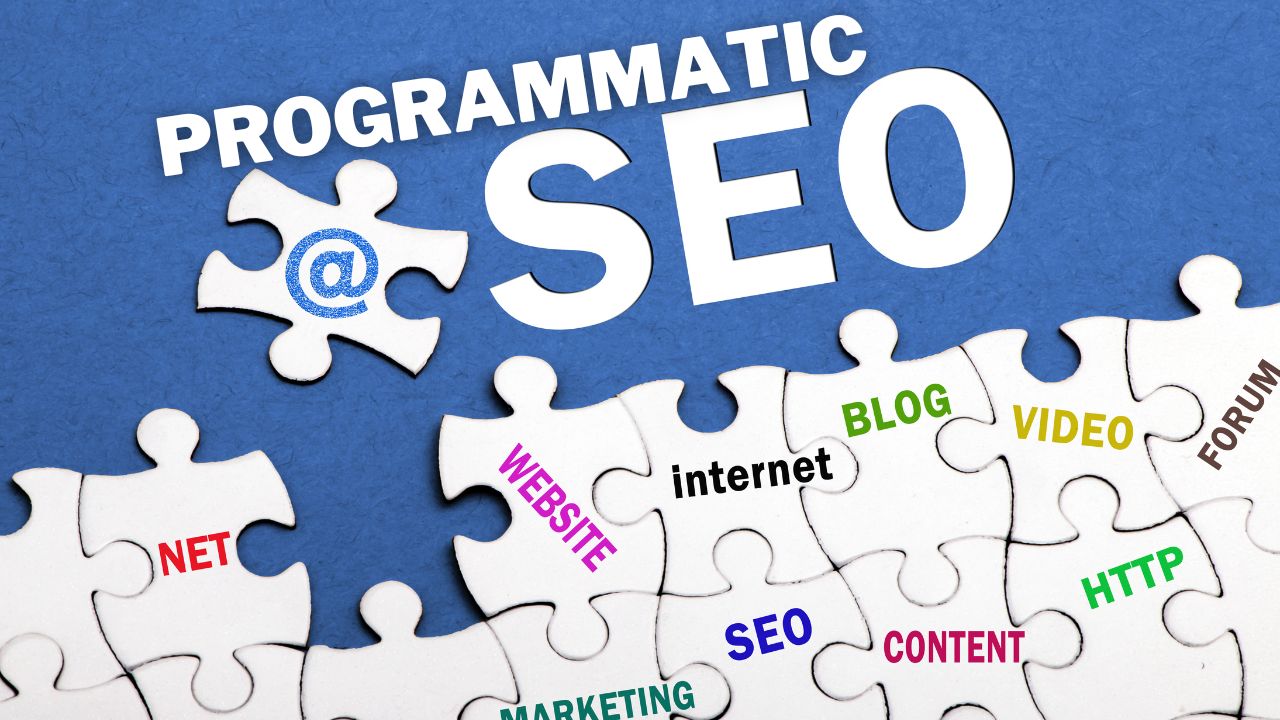How to do Programmatic SEO
Programmatic SEO involves automating the creation of large numbers of web pages to target specific keywords and topics to enhance search engine visibility. This approach is particularly useful for SaaS (Software as a Service) companies that need to scale their content rapidly and effectively. Here’s a detailed guide on how to implement programmatic SEO for SaaS:

Steps for Implementing Programmatic SEO for SaaS
1. Keyword Research and Topic Identification
- Identify Keywords: Use tools like Ahrefs, SEMrush, and Google Keyword Planner to find relevant keywords for your SaaS product.
- Cluster Keywords: Group similar keywords into clusters to create content themes or topics.
2. Data Collection
- Gather Data: Collect data that can be used to generate content, such as user reviews, industry statistics, product features, and use cases.
- APIs and Databases: Utilize APIs and databases to pull relevant data automatically.
3. Template Creation
- Design Templates: Create HTML templates for different types of pages (e.g., feature pages, use case pages, location pages).
- Dynamic Content: Ensure templates can dynamically insert data (e.g., keyword, location, feature) into predefined sections.
4. Content Generation
- Automate Content Creation: Use scripts or tools to populate templates with data. Tools like Python, SQL, and CMS plugins can help automate this process.
- Ensure Quality: Implement rules to check for content quality and uniqueness to avoid duplicate content issues.
5. Internal Linking Structure
- Automated Linking: Develop a strategy for internal linking to ensure all pages are easily accessible and well-connected.
- Hierarchy and Clusters: Link cluster pages to pillar pages to enhance topic authority.
6. SEO Best Practices
- Meta Tags: Automate the generation of meta titles, descriptions, and header tags using your keywords.
- Schema Markup: Implement schema markup to help search engines understand your content better.
- Mobile Optimization: Ensure your pages are mobile-friendly and load quickly.
7. Monitoring and Optimization
- Track Performance: Use tools like Google Analytics and Google Search Console to monitor the performance of your pages.
- Iterative Improvement: Regularly update and optimize your content based on performance data and new keyword insights.
Example Scenario
Imagine a SaaS company that provides project management tools. Here’s how programmatic SEO could be implemented:
- Keyword Research: Identify keywords such as “project management software for small business,” “task management features,” and “project tracking tools.”
- Data Collection: Collect data on different project management features, user reviews, and industry-specific use cases.
- Template Creation: Create templates for feature pages, use case pages, and comparison pages.
- Content Generation: Automatically generate pages like:
Feature Page: “Task Management Feature of [Your SaaS]”
Use Case Page: “How [Your SaaS] Helps Small Businesses”
Comparison Page: “[Your SaaS] vs. Competitor” - Internal Linking: Link feature pages to use case pages and comparison pages to ensure users can navigate easily.
- SEO Best Practices: Automate meta tags, implement schema markup, and ensure mobile optimization.
- Monitoring and Optimization: Regularly check page performance and adjust content as needed.
How many pages you should create for programmatic SEO focusing on SaaS (Software as a Service)?
- Target Keywords and Topics: Identify the keywords and topics relevant to your SaaS product. This includes long-tail keywords, questions, and related terms. Create a list of these keywords.
- Content Strategy: Develop a content strategy that addresses the different stages of the customer journey: awareness, consideration, and decision. Each stage may require multiple pages to address various user intents.
- Competitor Analysis: Analyze your competitors to see how many pages they have and the types of content they are publishing. This can give you a benchmark.
- Product Features and Use Cases: Create pages for each feature and use case of your SaaS product. If your product has multiple features or caters to various industries, you may need more pages.
- Location-Based Pages: If your SaaS product targets specific locations, consider creating location-specific pages.
- FAQ and Support Pages: Create pages for frequently asked questions and support topics that can drive organic traffic.
- Landing Pages: Develop landing pages for different marketing campaigns, personas, and pain points.
Steps to Calculate Number of Pages
- Keyword List: Identify all relevant keywords.
– For example, if you identify 1000 keywords, and each keyword can be targeted on a unique page, you would start with 1000 pages. - Content Clusters: Group keywords into clusters based on related topics.
– If you can group your 1000 keywords into 100 clusters, you may create 100 pillar pages and supporting content for each cluster. - Feature Pages: List all features of your SaaS product.
– If your product has 20 features, create a page for each feature. - Use Case Pages: Identify different use cases.
– If you identify 10 use cases, create a page for each use case. - Location Pages: Determine the number of locations you want to target.
– If you target 50 locations, create a page for each location. - FAQ and Support Pages: Estimate the number of FAQs and support topics.
– If you have 50 FAQs and 30 support topics, create separate pages for each. - Landing Pages: Create unique landing pages for different campaigns and personas.
– If you have 5 personas and 10 campaigns, create 50 landing pages (5 personas x 10 campaigns).
Example Calculation
- Keyword Pages: 1000
- Pillar and Cluster Pages: 100 (clusters) + 900 (supporting content)
- Feature Pages: 20
- Use Case Pages: 10
- Location Pages: 50
- FAQ and Support Pages: 80 (50 FAQs + 30 support topics)
- Landing Pages: 50
Total Estimated Pages: 1000 (keyword pages) + 1000 (cluster pages) + 20 (feature pages) + 10 (use case pages) + 50 (location pages) + 80 (FAQ/support pages) + 50 (landing pages) = 2210 pages
The number of pages you should create for programmatic SEO for your SaaS product can vary significantly. Using the factors and steps outlined above, you can estimate the number of pages needed. For a comprehensive approach, regularly review and update your SEO strategy based on performance data and changing market trends.
Benefits of Programmatic SEO
- Scalability: Quickly create thousands of pages to target a wide range of keywords and topics.
- Efficiency: Automate repetitive tasks, saving time and resources.
- Consistency: Maintain consistent structure and quality across all pages.
- Improved Visibility: Enhance search engine visibility by covering more keyword variations and long-tail keywords.
Challenges
- Content Quality: Ensuring high-quality, unique content can be challenging when generating large volumes of pages.
- Technical Complexity: Requires technical expertise to set up templates, automate content generation, and manage data sources.
- Monitoring and Maintenance: Continuous monitoring and updating are necessary to maintain performance and relevance.
By carefully planning and executing a programmatic SEO strategy, SaaS companies can significantly enhance their online presence and attract more targeted traffic.
Why Your SaaS Business Needs an SEO Specialist in the Philippines
In the competitive world of SaaS, standing out in search results is crucial. This is where hiring an SEO specialist in the Philippines can make a significant difference. Filipino SEO experts are known for their deep understanding of search algorithms and cost-effective solutions. Whether you’re looking to optimize your site structure, enhance content, or improve keyword targeting, an SEO specialist from the Philippines can provide tailored strategies to boost your online visibility.
How to Hire an SEO Specialist for Your SaaS Company
Hiring an SEO specialist can be a game-changer for your SaaS business. But how do you find the right one? Start by looking for candidates with a proven track record in SaaS SEO. Look at their previous work, client testimonials, and expertise in your specific niche. An expert SEO agency in the Philippines can offer a pool of talented professionals ready to elevate your SEO strategy. By choosing to hire an SEO specialist, you ensure that your SEO efforts are in expert hands, leading to better rankings and increased traffic.
Top Benefits of Partnering with an Expert SEO Agency in the Philippines
Partnering with an expert SEO agency in the Philippines brings numerous advantages to your SaaS business. These agencies are equipped with the latest SEO tools and techniques, ensuring your strategies are up-to-date. They offer comprehensive SEO services, from keyword research to link building and content creation. By leveraging their expertise, you can focus on your core business while they drive organic traffic to your site. Additionally, the cost-effectiveness of hiring a Philippine-based SEO agency allows you to maximize your ROI.
Expert SEO Services: A Must-Have for SaaS Success
In the SaaS industry, expert SEO services are indispensable. These services encompass a range of activities, including on-page optimization, technical SEO, and content marketing. By investing in expert SEO services, you ensure your SaaS website is optimized for search engines and user experience. This leads to higher search rankings, increased organic traffic, and ultimately, more conversions. For those looking to enhance their online presence, partnering with a top SEO agency in the Philippines can provide the expertise and results needed.
Case Study: Boosting SaaS Visibility with an SEO Specialist from the Philippines
Explore how a leading SaaS company transformed its online presence by hiring an SEO specialist from the Philippines. The specialist implemented a comprehensive SEO strategy that included thorough keyword research, technical audits, and content optimization. As a result, the company saw a significant increase in organic traffic and improved search engine rankings. This case study highlights the effectiveness of hiring an SEO specialist and the tangible benefits it can bring to your business.

